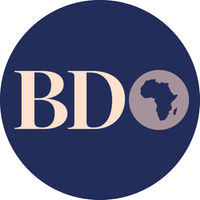
SGR locomotives and passenger coaches. FILE PHOTO | NMG
Summary
- Preferences for the US model for development subsided from 59 percent in 2014 to the current 43 percent.
- Developing countries prefer Chinese loans over lending from Western countries due to relaxed requirements on human rights, indebtedness and environmental impact. This makes them susceptible to indebtedness.
- Despite China’s ambitions to expand its networks of 'Confucius Institutes' (an education system that allows people around the world to learn Chinese language and culture) on the continent, the report shows the country is making little in-roads.
Over the past five years, China has pumped billions of shillings into Kenya’s mega infrastructure projects covering roads and rails.
From the Sh31 billion Thika Road, the Sh327 billion Standard Gauge Railway to the ongoing Sh59 billion Nairobi Expressway, road and rail networks have expanded, traffic jams alleviated and commuting hours slashed.
Despite the improvements, nearly five in every 10 Kenyans still prefer the US’s development model over China’s, a survey shows.
"43 percent of Kenyans rank the US model as ideal followed by China (23 percent)," the Afrobarometer report shows.
This comes at a time Washington’s is warning of rising China’s debt on poor countries.
Zambia could be the first country on the continent to default on its foreign debt after it failed to pay more than Sh4.4 billion last month.
Developing countries prefer Chinese loans over lending from Western countries due to relaxed requirements on human rights, indebtedness and environmental impact. This makes them susceptible to indebtedness.
An estimated 35 percent of young Africans (18-35 years) and 27 percent of those above 55 years prefer the US model to the Chinese one.
“Given that China is the newcomer in this global competition, it is notable that younger Africans are more likely than their elders to favour the US model,” it says.
But, preferences for the US model for development subsided from 59 percent in 2014 to the current 43 percent.
In contrast, China saw a slight drop to 23 percent from 24 percent during the period.
The report, which was conducted between July 2019 and April 2020, drew data from 26,777 interviews in eight countries.
On average, about six in 10 Africans (59 percent) say China’s influence in their country as “somewhat positive” or “very positive,” while only about one in seven (15 percent) consider it negative.
The US (59 percent) follows in terms of positivity rate followed by Africa Union (50 percent), former colonial power (46 percent), Russia (38 percent).
“Positive perceptions of Chinese and US influence follow similar patterns across key socio demographic groups. For both countries, men, highly educated citizens, and younger adults are somewhat more likely than women, less educated citizens, and older adults to see the influence as positive,” it shows.
Chinese influence
Perceptions of Chinese influence in the country declined from 75 percent in 2014 to 72 percent this year.
About eight in 10 Kenyans (74 percent) are aware that China gives loans or development assistance to them.
“About three-quarters (77 percent) of those who are aware that their countries receive loans or development assistance from China are also aware that their governments will likely be required to repay loans.
“Except for Lesotho, majorities in all surveyed countries are aware of this obligation, including about nine in 10 citizens in Kenya (92 percent), Guinea (91 percent), Ghana (87 percent), and Uganda (87 percent),” it adds.
A majority of Kenyans (87 percent) are concerned about the Government’s indebtedness to China. They are followed by Namibians (78 percent) and Angolans (75 percent).
Only three in 10 Sierra Leoneans (30 percent) in Botswana (31 percent) express such concerns.
A third of Kenya’s Sh3.2 trillion external debts is owed to private creditors, including holders of the country’s Eurobonds.
China is Kenya’s largest bilateral lender at Sh733.70 billion as at September 2020 with more than half of loans attached to the construction of the standard gauge railway (SGR).
“This suggests that the US government and other development partners may be meeting with some success in their efforts to remind Africans that even if money from China and other non-traditional development partners comes with fewer strings, they are in danger of being lured into a deepening debt trap,” it shows.
In April, Kenya’s efforts to secure debt relief from China stalled after Beijing raised concerns about its membership of the group of 20 major economies (G20) that has attached tough conditions for freezing loan repayments by poor nations.
Treasury Cabinet Secretary Ukur Yatani said the talks for debt relief to free up funds to fight Covid-19 have been delayed on China’s request to strike a deal with Kenya once the G20 debt relief lapses.
The Chinese reckon they are part of the G20 initiative and would not want to be seen doing separate deals with individual countries such as Kenya, which had Chinese loans worth Sh693 billion in December.
This year alone, the Treasury is seeking Sh95 billion in interest and principal instalments to pay off loans from the Chinese government, Chinese Exim Bank and the China Development Bank.
Despite China’s ambitions to expand its networks of 'Confucius Institutes' (an education system that allows people around the world to learn Chinese language and culture) on the continent, the report shows the country is making little in-roads.
Kenya’s China debt stood at Sh80.9 billion in 2014, the first year of Mr Kenyatta’s presidency, before ballooning to Sh693 billion in December, a 766 percent growth.
This is as younger Africans consider English (71 percent) as more important followed by French (14 percent), Arabic (four percent) while Chinese language (two percent).
“English is particularly valued by Africans with at least a secondary education (78 percent), though interest in Chinese is also higher among those with higher education ( five percent),” it shows.
55 percent of Sierra Leone citizens believe the US model as the best followed by Ethiopia (46 percent), Cabo Verde (43 percent) and Uganda (41 percent).
This is as citizens of Burkina Faso believe that China’s model is the best at 39 percent then Mali (38 percent) and Botswana (25 percent).
While six in 10 Africans see China’s influence as positive, that proportion has decreased over the past five years (from 65 percent to 60 percent across 16 countries surveyed in both rounds).
Other countries with citizens that have heard much about Chinese loans or development assistance including Cabo Verde (67 percent), Ghana (58 percent) and Mali (57 percent).
In Tunisia, it is 24 percent, Nigeria (28 percent), Sierra Leone (29 percent) and Botswana (29 percent).





No comments :
Post a Comment